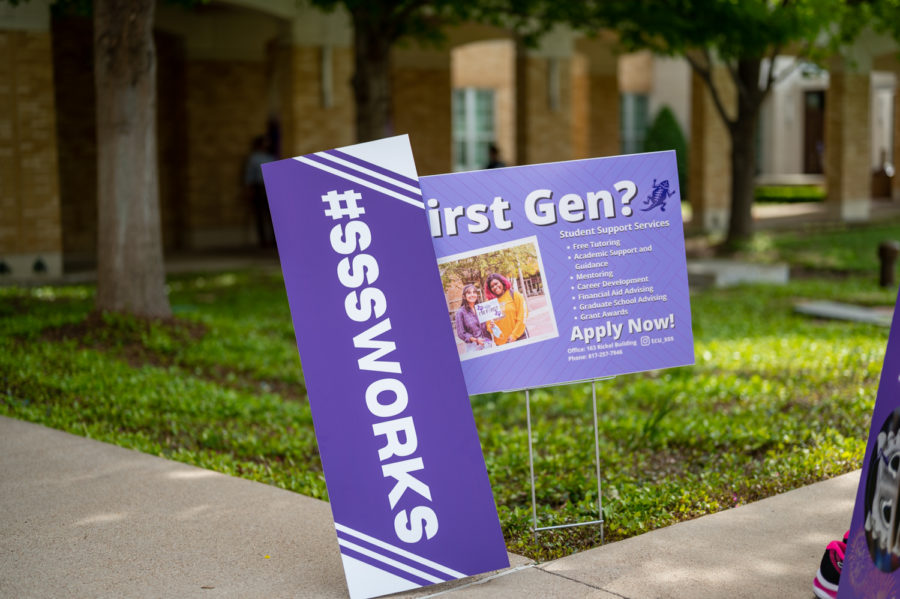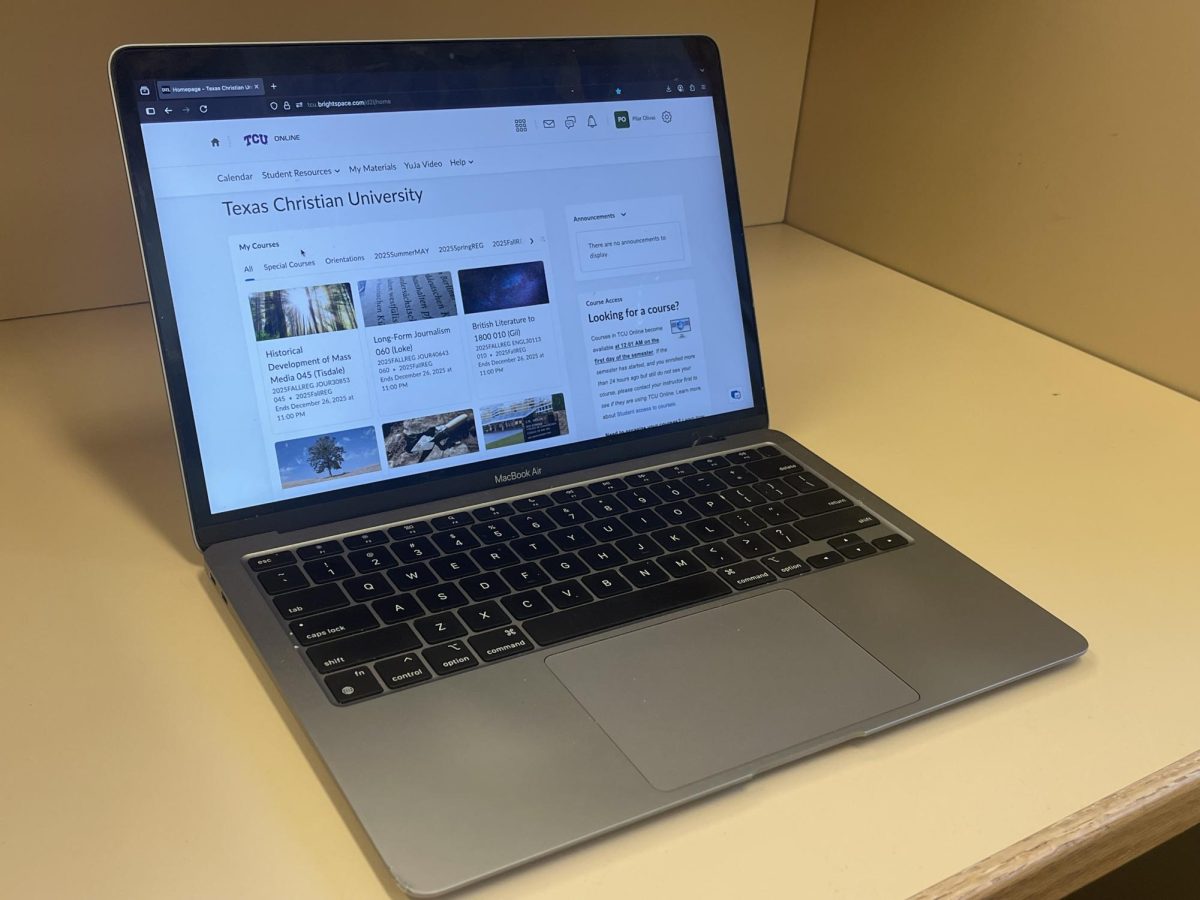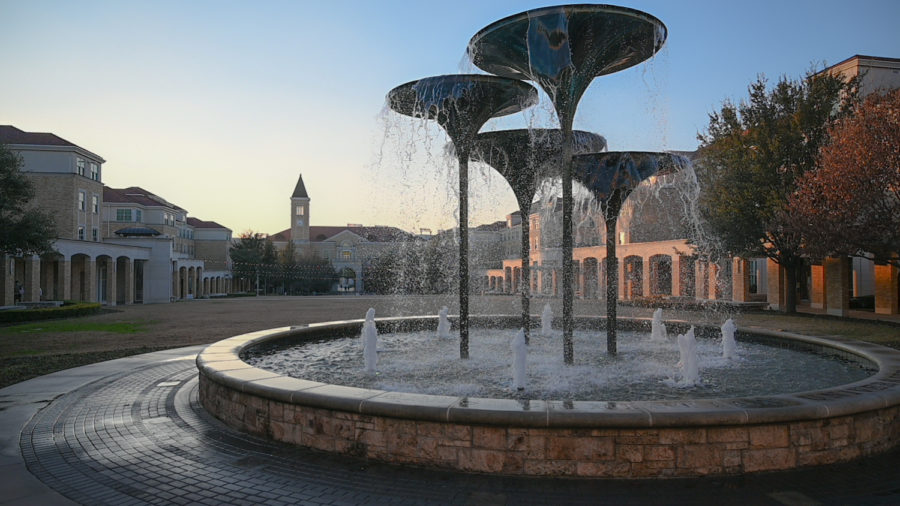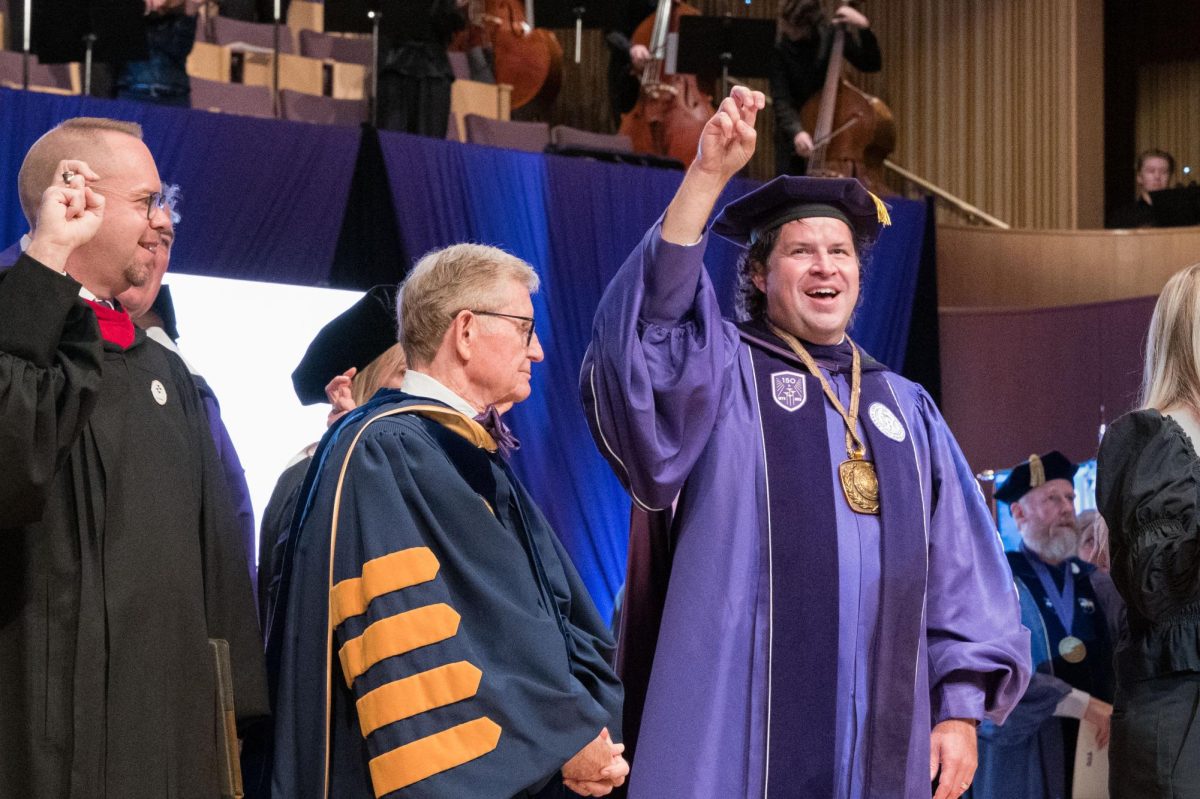TCU is known for its low men-to-women ratio, but it isn’t the only university where the women outnumber the men. The number of men attending college for every 100 women has dropped from 117 in 1970 to 75 in 2011. According to the National Center for Education Statistics, there are only three men college graduates for every four women. TCU’s incoming student male-to-female ratio is currently 41 percent male and 59 percent female, according to the admissions office. Similarly, Baylor University is 42 percent male and 58 percent female. University of Texas at Arlington is 40 percent male and 60 percent female. Southern Methodist University is split: 50 percent male and 50 percent female, according to U.S. News. “You can definitely tell there are more women than men,” said senior child development major Jordan Talley. “Just from walking around college campuses, what gender do you see more of? Female.” Why the drop? There are several reasons, both social and psychological, as to why men are less likely to attend college than women. Forbes magazine attributes the gap to the changing roles for males in society. Traditionally, men were the primary breadwinners while women would stay home and take care of the children. Now, because more women are becoming independent and more men are comfortable with staying home, fewer men see the need to earn a college degree. “We have more little girls who can grow up seeing female physicians, and engineers and doctors. I don’t think that was the case 10 or 15 years ago,” said Jo Beth Jimerson, assistant professor of education. “Women are starting to see more opportunities for themselves and those jobs require a university education.” Jimerson said the trend could also be attributed to the education required for traditional male role-related jobs, like electricians and plumbers. “If more men are going straight into those and more women are going into traditionally more feminine professions like teaching and nursing, those things require university education,” Jimerson said. Others attribute this trend to the idea of “learning by doing” and that men feel college is a waste of time and money. “They weigh the affordability and value of a college education and since most will probably be in debt when they graduate, they do not feel that they are receiving the best return on investment for their time,” said licensed social worker Melissa Cohen in an article in the online journal Education News . Males are also four times more likely to commit suicide than women, 25 more times likely to be sent to prison and nine times more likely to be murdered, according to Postsecondary Education Opportunity. These factors contribute to men either dropping out or failing to complete high school. “More women than men graduate from high school. Therefore, right off the bat, we are drawing from a larger pool of women than men,” TCU interim dean of admissions Heath Einstein said. How Fort Worth Compares According to an Education Week Study, the Fort Worth Independent School District graduation rate for all its schools is 54.9 percent female and 43.1 percent male. R.L. Paschal High School counselor Lisa Wright said she believes the choice to attend college is based on family pressure or the student’s mentality. “I think there are a lot of families where it is just the expectation that the kids are going to go to college,” Wright said. “I sometimes see the opposite trend where the expectation is for the kids to go to college, but they already are in a household where they have everything, so there’s less of a motivation for them to want to go to college.” Wright said Paschal focuses more on giving its students choices about their future as opposed to forcing college. “College is for a lot of people, but it’s not for everyone,” Wright said. “Who are we to judge if someone wants to become a plumber or an electrician? Those are very good jobs and if that makes someone happy and they don’t have to go to college, that’s OK.” Jimerson said higher female college attendance can also be attributed to the increased proficiency in math and science among young women, areas that typically require university degrees. At Paschal, 77 percent of females tested proficient in math compared to 72 percent of males. Similarly, Arlington Heights High School had 67 percent of its female students tested proficient in math compared to 57 percent of its male students. How colleges and high schools are trying to combat the trend With this growing trend, schools around the country are trying different tactics to get more men to attend college. Einstein said one of TCU’s major problems in appealing to men is that some of its popular majors attract women. “[One] of our signature programs [is] nursing, a field that skews heavily toward women. [Some] traditionally male-dominated majors, like engineering, on the other hand, are small,” he said. Other female-dominated majors like education are making strides at attracting more men by offering double majors and minors in the field. “If you go for the assumption, for example in the hard sciences where you tend to have more males and they might not want to switch over to teaching where we are almost entirely female,” Jimerson said. “But it might be very appealing to get the major in chemistry and add your teaching hours onto it.” TCU has also taken other routes to combat this trend. In 2012, TCU sent out a “BROchure” to men in response to low admissions deposit numbers from male students. “We don’t historically create pieces geared toward a particular gender. However, having identified a gender gap trend established over many years, we decided to create a material that catered to what may appeal to men,” Einstein said. The theme for the “BROchure” was “The Big 12 Reasons Guys Should Attend TCU” and included several reasons TCU would cater to the male gender. However, hopes for an increase in male enrollment quickly faded after the school received its deposit numbers segmented by gender. In 2011, TCU enrolled 40.3 percent male and 59.7 percent female and in 2012, 38.2 percent male and 61.8 percent female. The ratio continued its trend in 2013, enrolling 37.5 percent male and 62.5 percent female. In 2014, the school enrolled 37.9 percent male and 62.1 percent female and in 2015, 38.5 percent male and 61.5 percent female. It wasn’t until 2016 that TCU was able to enroll 41 percent of male students. Einstein said that even though TCU is trying to appeal more to men, the university is more focused on enrolling the strongest students who fit into and meaningfully contribute to the Horned Frog community.
Categories:
Gender gap increases in colleges around the nation
Published Nov 14, 2016

Tags:
More to Discover









